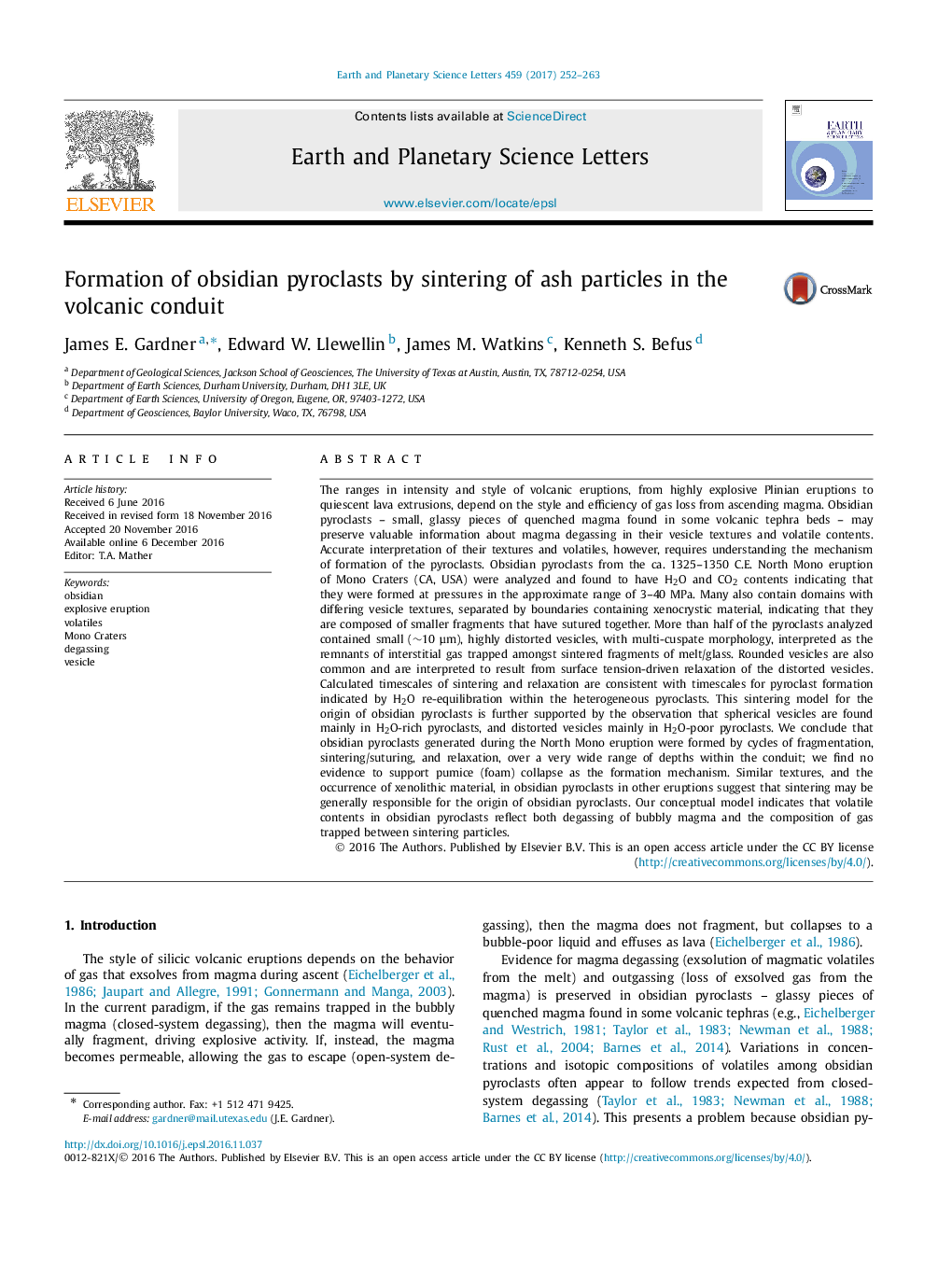| کد مقاله | کد نشریه | سال انتشار | مقاله انگلیسی | نسخه تمام متن |
|---|---|---|---|---|
| 5780144 | 1634697 | 2017 | 12 صفحه PDF | دانلود رایگان |
عنوان انگلیسی مقاله ISI
Formation of obsidian pyroclasts by sintering of ash particles in the volcanic conduit
ترجمه فارسی عنوان
تشکیل پری کلاستات ابسیدین توسط پختن ذرات خاکستر در کانال آتشفشانی
دانلود مقاله + سفارش ترجمه
دانلود مقاله ISI انگلیسی
رایگان برای ایرانیان
کلمات کلیدی
موضوعات مرتبط
مهندسی و علوم پایه
علوم زمین و سیارات
علوم زمین و سیاره ای (عمومی)
چکیده انگلیسی
The ranges in intensity and style of volcanic eruptions, from highly explosive Plinian eruptions to quiescent lava extrusions, depend on the style and efficiency of gas loss from ascending magma. Obsidian pyroclasts - small, glassy pieces of quenched magma found in some volcanic tephra beds - may preserve valuable information about magma degassing in their vesicle textures and volatile contents. Accurate interpretation of their textures and volatiles, however, requires understanding the mechanism of formation of the pyroclasts. Obsidian pyroclasts from the ca. 1325-1350 C.E. North Mono eruption of Mono Craters (CA, USA) were analyzed and found to have H2O and CO2 contents indicating that they were formed at pressures in the approximate range of 3-40 MPa. Many also contain domains with differing vesicle textures, separated by boundaries containing xenocrystic material, indicating that they are composed of smaller fragments that have sutured together. More than half of the pyroclasts analyzed contained small (â¼10 μm), highly distorted vesicles, with multi-cuspate morphology, interpreted as the remnants of interstitial gas trapped amongst sintered fragments of melt/glass. Rounded vesicles are also common and are interpreted to result from surface tension-driven relaxation of the distorted vesicles. Calculated timescales of sintering and relaxation are consistent with timescales for pyroclast formation indicated by H2O re-equilibration within the heterogeneous pyroclasts. This sintering model for the origin of obsidian pyroclasts is further supported by the observation that spherical vesicles are found mainly in H2O-rich pyroclasts, and distorted vesicles mainly in H2O-poor pyroclasts. We conclude that obsidian pyroclasts generated during the North Mono eruption were formed by cycles of fragmentation, sintering/suturing, and relaxation, over a very wide range of depths within the conduit; we find no evidence to support pumice (foam) collapse as the formation mechanism. Similar textures, and the occurrence of xenolithic material, in obsidian pyroclasts in other eruptions suggest that sintering may be generally responsible for the origin of obsidian pyroclasts. Our conceptual model indicates that volatile contents in obsidian pyroclasts reflect both degassing of bubbly magma and the composition of gas trapped between sintering particles.
ناشر
Database: Elsevier - ScienceDirect (ساینس دایرکت)
Journal: Earth and Planetary Science Letters - Volume 459, 1 February 2017, Pages 252-263
Journal: Earth and Planetary Science Letters - Volume 459, 1 February 2017, Pages 252-263
نویسندگان
James E. Gardner, Edward W. Llewellin, James M. Watkins, Kenneth S. Befus,
